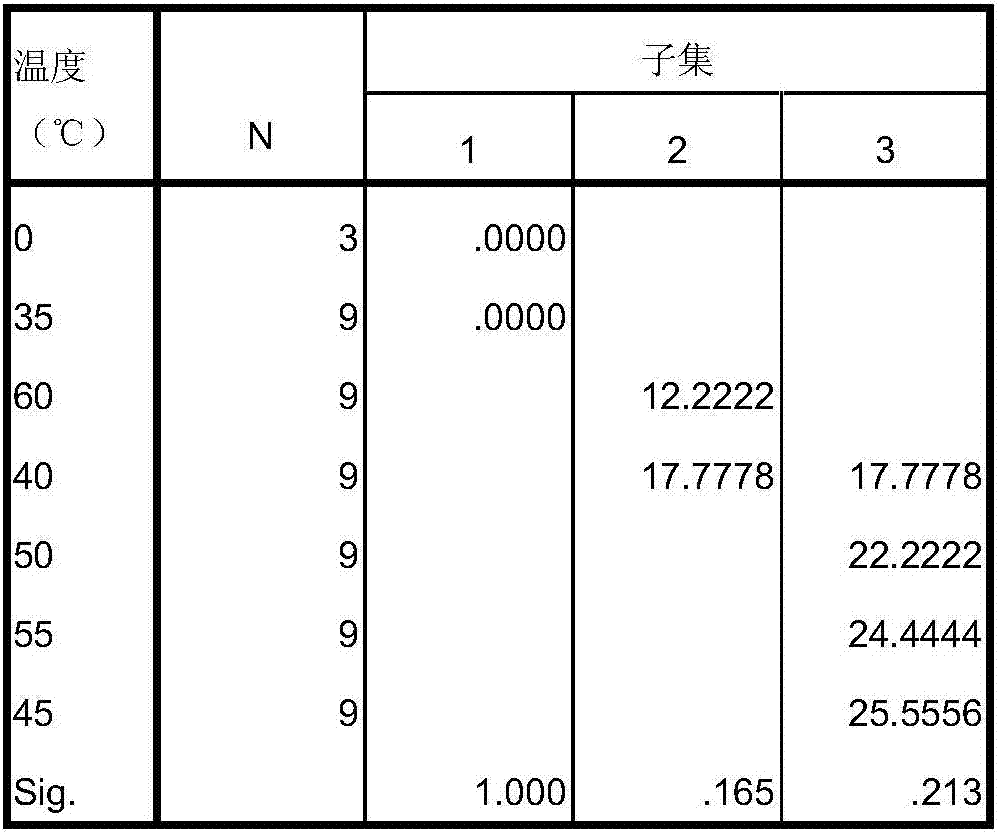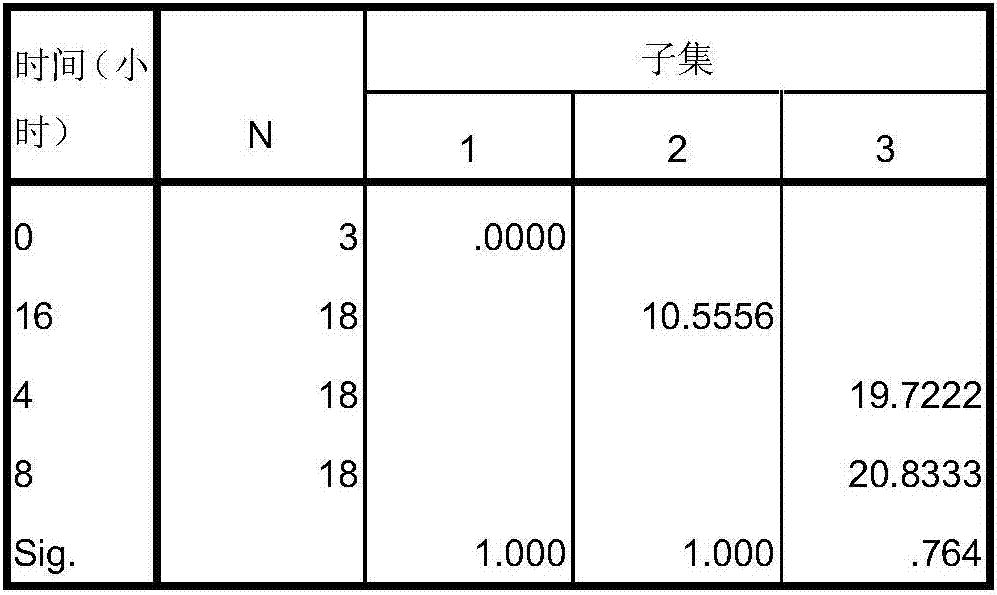Method of promoting germination of Mallotus apelta seeds preserved at low temperature
A technology of low-temperature preservation and white-backed leaves, which is applied in the fields of seed and rhizome treatment, application, agriculture, etc., and can solve the problem that the seeds of white-backed leaves cannot germinate
- Summary
- Abstract
- Description
- Claims
- Application Information
AI Technical Summary
Problems solved by technology
Method used
Image
Examples
Embodiment 1
[0016] 1. Materials and methods:
[0017] 1.1 Research materials:
[0018] In October 2015, mature fresh Mallotus apelta seeds were collected in Guanyin Mountain, Yuanyang County, Honghe Prefecture, Yunnan Province. After collection, they were transported back to the Southwest Wild Organism Germplasm Bank Seed Preservation Center of Kunming Institute of Botany.
[0019] 1.2 Research methods:
[0020] 1.2.1 Drying and refrigerating and returning to temperature after refrigerating: put the seeds collected in step 1.1 in a drying room at 15°C and 15% relative humidity to dry. Regularly use the Hygrolab C1unit relative humidity measuring instrument produced by Rotronic Ltd. combined with the Rotronic HC 2-AW probe produced by the same company to measure the relative humidity of the seeds, and put them into a closed container after the equilibrium relative humidity reaches 15%. On July 20, 2016, the airtight container containing the seeds was placed in a refrigerator at -18°C to...
Embodiment 2
[0040] 1. Materials and methods:
[0041] 1.1 Research materials:
[0042]On September 27, 2014, Shi Chuan, Lingnan Township, Xiuning County, Huangshan City, Anhui Province collected mature fresh Mallotus apelta seeds. After collection, they were transported back to the Southwest Wild Organism Germplasm Bank Seed Preservation Center of Kunming Institute of Botany.
[0043] 1.2 Research methods:
[0044] 1.2.1 Drying and refrigerating and returning to temperature after refrigerating: put the seeds collected in 1.1 in a drying room at 15°C and 15% relative humidity to dry. Regularly use the Hygrolab C1unit relative humidity measuring instrument produced by Rotronic Ltd. combined with the Rotronic HC 2-AW probe produced by the same company to measure the relative humidity of the seeds, and put them into a closed container after the equilibrium relative humidity reaches 15%. On September 14, 2015, the airtight container with the seeds was placed in a refrigerator at -18°C to -2...
Embodiment 3
[0057] 1. Materials and methods:
[0058] 1.1 Research materials:
[0059] On October 15, 2008, mature fresh Mallotus apelta seeds were collected in Mengdong River, Yongshun County, Xiangxi Autonomous Prefecture, Hunan Province. After collection, they were transported back to the Southwest Wild Organism Germplasm Bank Seed Preservation Center of Kunming Institute of Botany.
[0060] 1.2 Research methods:
[0061] 1.2.1 Drying and refrigerating and returning to temperature after refrigerating: put the seeds collected in 1.1 in a drying room at 15°C and 15% relative humidity to dry. Regularly use the Hygrolab C1unit relative humidity measuring instrument produced by Rotronic Ltd. combined with the Rotronic HC 2-AW probe produced by the same company to measure the relative humidity of the seeds, and put them into a closed container after the equilibrium relative humidity reaches 15%. In April 2012, the airtight container containing the seeds was placed in a refrigerator at -18...
PUM
 Login to View More
Login to View More Abstract
Description
Claims
Application Information
 Login to View More
Login to View More - R&D
- Intellectual Property
- Life Sciences
- Materials
- Tech Scout
- Unparalleled Data Quality
- Higher Quality Content
- 60% Fewer Hallucinations
Browse by: Latest US Patents, China's latest patents, Technical Efficacy Thesaurus, Application Domain, Technology Topic, Popular Technical Reports.
© 2025 PatSnap. All rights reserved.Legal|Privacy policy|Modern Slavery Act Transparency Statement|Sitemap|About US| Contact US: help@patsnap.com



